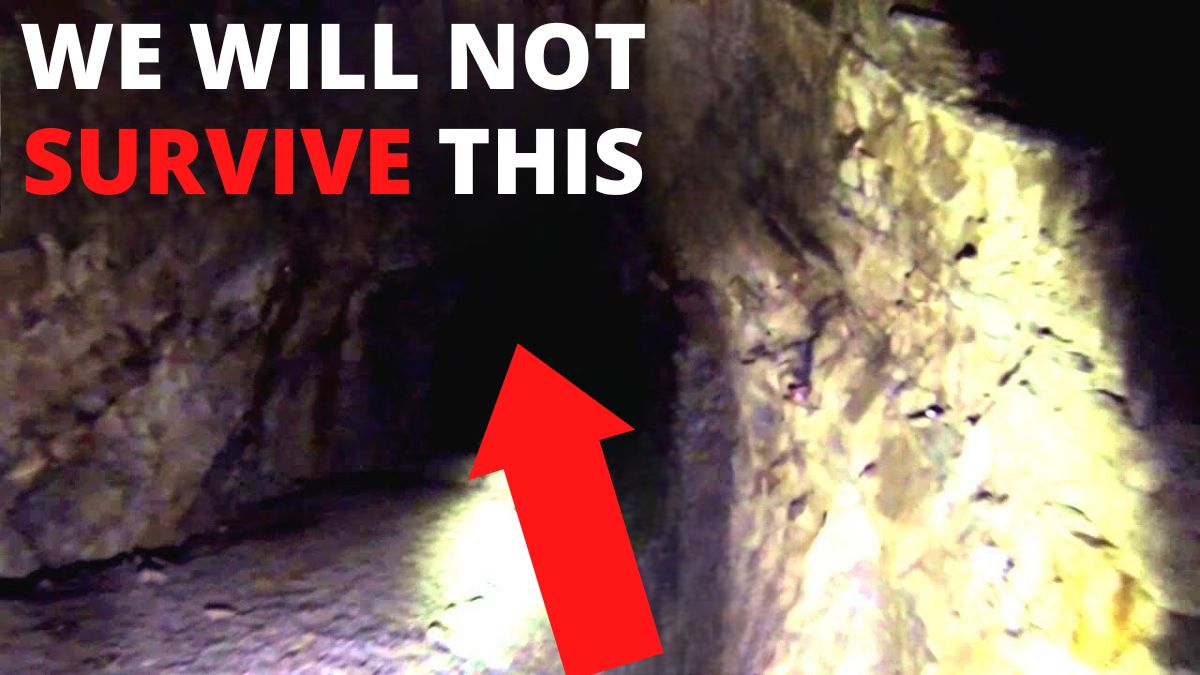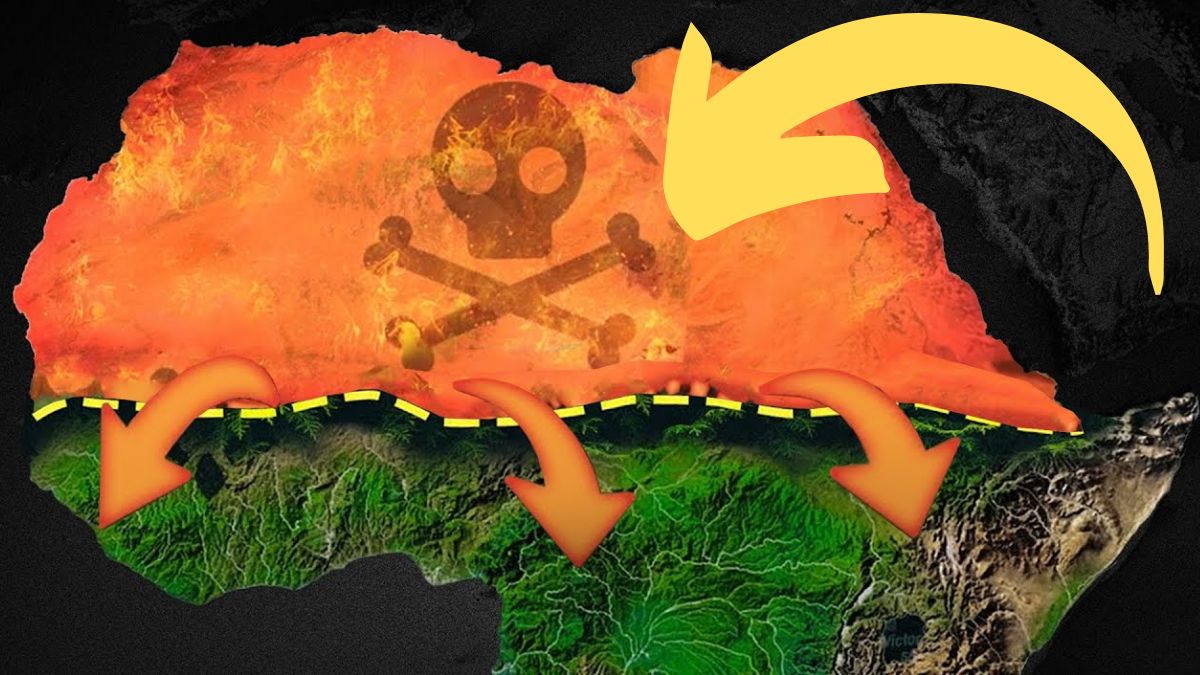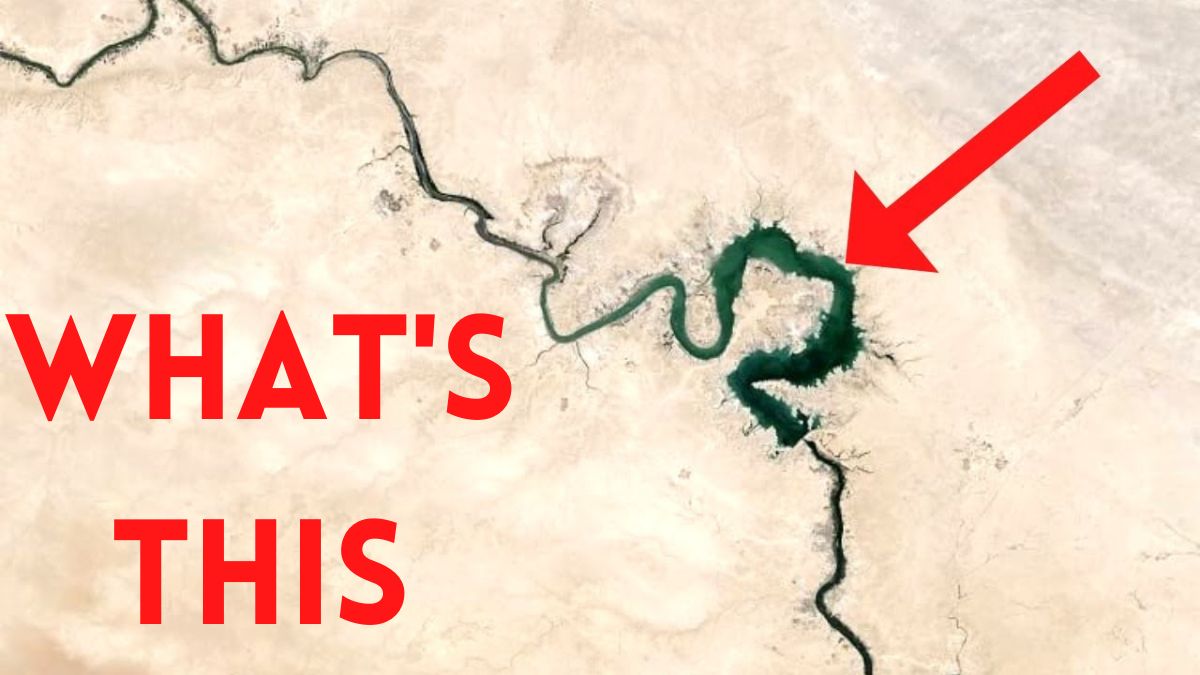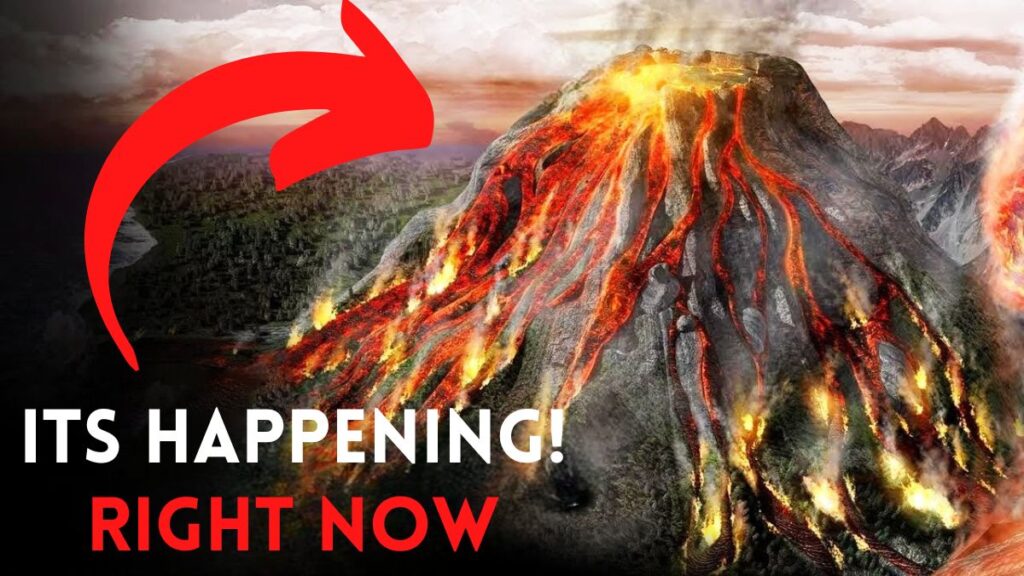
This is an Indonesia map. It has over 13,466 islands, about 9,000 of which are named. Sumatra, Java, Borneo, Silhouette, and New Guinea are the primary five islands. However, if you’re interested in super volcanoes, there is one Indonesian location that stands out to you: Toba Lake.
The lake is a sight that many people awe at, but they may not be aware that beneath it is the world’s largest volcano, which has just shattered the Earth. How powerful is this volcano, and could the eruption have an impact on your location? Take a trip to Indonesia to see the world’s largest volcano, which recently shattered the Earth, to find out.
Indonesia is a popular vacation spot. The country is in maritime Southeast Asia, between the Indian Ocean to the south and west, the Timor Sea and the Arafura Sea to the south, the Bay of Bengal to the north and west, and the South China Sea, also known as the Pacific Ocean, as well as a few other marginal seas to the north. On the island of Borneo, Indonesia borders Malaysia, Papua New Guinea, and Timor-Leste, or East Timor, on the island of Timor. The nation shares maritime borders with Australia, India, Palau, the Philippines, Singapore, Thailand, and Vietnam.
Five major islands and approximately 30 smaller groups make up the nation. There are a total of 17,508 islands, approximately 6,000 of which are inhabited. Indonesia has 1,904,569 square kilometers of land area, making it the world’s largest island nation. Although slightly smaller than Mexico, the archipelago is more than five times larger than Germany. The country is multiethnic and has more than 271 million people living there. It is by far the world’s most populous island nation. The majority of the larger islands are mountainous, with peaks that range from 3,000 to 3,800 meters.
Indonesia is one of the world’s most active volcanic regions and one of the most vulnerable to earthquakes due to its location in the “ring of fire.” Volcanic activity and ocean mountain building caused by tectonic plate movement in Asia, the Indian Ocean, and the Pacific Ocean primarily formed the Indonesian islands. Two massive plates, the Indian Ocean and Western Pacific plates, slide beneath the Eurasian plate, which is even larger, and the Eurasian and Australian continental plates collide in the Indonesian region.
The islands of Indonesia are susceptible to earthquakes and even tsunamis. The island nation ranks third among nations with the most volcanoes, behind only Russia and the United States. This region, particularly Java, is highly tectonically unstable, resulting in unpredictable agricultural conditions in some areas. There are 400 active volcanoes, of which about 100 are in the country’s mountains. Indonesia was formed when geological plates from Australia, Asia, and the Pacific pushed up. Along the Indonesian chain’s southern coast is a deep trench.
A subduction zone is formed when the Eurasian and Australian continental plates collide, resulting in numerous earthquakes and a volcano chain that extends from Sumatra to Java and New Guinea, with a few side branches to Sulawesi and the Malocas. At subduction zones, two plates collide head-on, with one plate rising to the top and dragging the other down. A descending convection current can sometimes flow down the ocean floor as a result of the motion. Here, deep sea trenches, mountain construction, and earthquakes occur. Every day, millions of tons of rock sink into the crust. The island of New Guinea, which includes Papua, is thought to have once been part of the Australian continent, according to scientists.
Both hot, humid alluvial planes along the coast of New Guinea and towering snow-capped mountain peaks lining its Central East-West spine were created by the tectonic action and breakup. The pepper will mountains separated the province into North and South for 650 kilometers from east to west. One of the planet’s most seismically active regions is Indonesia. It also leads the way in terms of volcanoes that are active or could be. It has the deep oceanic trench, gianticline belt, inner volcanic arc, marginal basin, and other typical physiographic features of an island arc. This abducted plate is moving almost parallel to the axis of the trench.
Typically, a strike-slip fault zone can be seen in subduction zones. Volcanoes in the bend to see are the result of the Pacific Plate subducting beneath the Eurasia plate in some instances, such as Sumatra, where the motion is oblique to the axis and runs parallel to the volcanic chain. In a region with intricate tectonics, one-fourth of Indonesia’s volcanoes are situated north of the Sundar Arc. Subduction zones, most of which run north to south, have been formed by a number of small plates. The Sulawesi, Helmuhera, and Sanghihi volcanoes are caused by subduction zones.
The rugged remains of long-dead volcanoes can be found on many of Indonesia’s islands. In Indonesia, there are approximately 400 volcanoes. From Sumatra to Flores, a series of volcanoes runs, with additional volcanoes in Silhouessi and the Malukus. These 127 include one-third of the world’s active volcanoes. Indonesia is one of the most active geological regions in the world. Each day, Indonesia experiences three earthquakes with a magnitude of five or higher on the Richter scale, and volcanic eruptions kill approximately ten times as many people as any other country.
However, there are positive aspects to volcanoes. The rich soil produced by volcanic ash and lava can yield multiple harvests year after year without the need for fertilizer. Also, high volcanic peaks can cause rain to fall. In point of fact, volcanoes are not only a fact of Indonesian life but also life itself. Experts contend that the enrichment of the soil by volcanic ash enables Javanese farmers to harvest three rice crops in a single season. Because there is only one volcano in Borneo, farmers there are unable to do so. The nation has more active volcanoes than any other. It has 76 volcanoes that have been active for a long time. In 2006, Indonesia had 1171 eruptions, fewer than Japan’s 1274. The 2968-meter-high Mount Merapi in the Jawa Tenga province, which last erupted in 2007, and the Silhouetti Uttara province’s Soputan, which last erupted in 2008, are notable active volcanoes. from 1972 to 1991.
There were 29 recorded eruptions, the majority of which occurred on Java between the years 2000 and 2009. The majority of Indonesia’s 110 new or continuous volcanic eruptions again took place in Java. Gunung, or “fire mountains,” are Indonesian names for volcanoes. The primary organization in Indonesia that keeps an eye on volcanoes is the Volcanological Survey of Indonesia. In the 1920s, the Dutch established it, and the Indonesian government expanded it. It has observation posts, and some of Indonesia’s most dangerous volcanoes, such as Murappi, Cinnabong, and others, are assigned to constant monitoring.
However, it is nearly impossible to accurately predict their activity. There is no other location in the world with such a large population and such close proximity to so many active volcanoes. Over the course of 500 years, the proximity of more than 30 volcanoes to 120 million people on Java has resulted in the deaths of 140,000 people. Volcanoes kill in a variety of ways, including tsunamis that frequently follow an eruption, suffocating mud, and scorching lava.
The locals’ daily lives are intertwined with these volcanoes. The Batak people, for instance, live on Sumatre, a huge island northwest of Java. European missionaries converted them to Christianity in the 19th century. However, many locals hold the belief that on Lay October, the first human being ascended Mount Pusuk Bukit, an active volcano, on a bamboo pole from heaven. Tenga Hindus in East Java climb Mount Bromo’s choking sulfurous clouds frequently to throw money, vegetables, chickens, and occasionally goats into the crater. On Flores, the Catholic Nagayo are buried with their backs to Mount Abu Lobo, whose cone dominates the southern horizon, like the majority of the islanders.
On Bali, which is mostly Hindu, volcanoes are also considered sacred. It is said that even when blindfolded, a true Balinese knows where Mount Agung, the island’s highest peak at 10,000 feet, and many people sleep with their heads pointing in that direction. When Mount Agung erupted in 1963, it killed a thousand people. Other people died of starvation because their crops were suffocated by the ash. It was regarded as a divine act by the locals, and what was once thought to be divine wrath is now thought to be a gift.
Hotels, restaurants, and villas for foreign tourists were built using the ash and sand from the eruption. Mount Agung is the island’s highest mountain and an active volcano that is 3142 meters high. The Balinese refer to it as the world’s navel. In 1963, a violent eruption occurred, resulting in approximately 500 deaths. To keep the volcano quiet, rice, hard-boiled eggs, and flower petals were left on it frequently. The oblong crater has a diameter of about 500 meters. Interestingly, the 3142-meter-high figure dates from before the volcano’s top was blown off during the eruption. It is currently thought to be 3014 meters high.
The shortest of the numerous hiking paths to the summit takes approximately three hours. From the Pura Passat Gung Temple and the Pura Basaki Temple, the two most popular climbing routes are There are treks that start at two in the morning and finish before sunrise; however, you may be required to make an offering prior to beginning the climb, and the mountain should be treated with respect. That means you can’t scream or eat anything with beef in it. On March 16, 1963, Barley’s Ganung a Gung erupted for the first time in 120 years. In May, a second eruption destroyed much of Northeastern Bali, killed 1100 people, and displaced 100,000 more. Whole villages were destroyed by layers of ash and flows of hot mud that made it to the sea. The situation got worse after the eruption, which led to landslides and La Hearts. This time, a lack of food caused more people to be displaced, villages were destroyed, and roads were closed.
The Balinese consider it to be the center of their universe. During the eruption, a gate dedicated to President Sukana was destroyed. This was interpreted as a sign of the corrupt government, which was swiftly overthrown. Sukano, according to many Balinese, caused Ali’s religious leaders to stage an important ritual at a tourism conference, which they believed sparked the eruption. 200 people were killed in the town of Super when a pyroclastic flow, also known as an incandescent cloud of volcanic debris, sped down the mountain. Nearly everyone in the village of La B was either suffocated or burned to death by the hot gas clouds. Children died while making strange whaling sounds, and boiling mud and ash destroyed other towns. Even weeks after the eruption, it was still too hot to enter some areas that were littered with dog-eating bodies. As cinder and ash clouds swept over Java, days turned to nights, and rivers and streams turned gray and muddy, making it hard to drink water.
Basaki, Bali’s most important shrine, is directly beneath the volcano. Thousands of people went any way to celebrate an April full moon ceremony, despite the dangers of new eruptions and the governor of Bali’s ban on visiting the temple. The gods offered platters of Palm fawns, bowls of rice, fried cakes, barbecued foul, squat bananas, and spiny durians. Women pick up hot coals with their bare hands at the end of some ceremonies. Mount Tambora is yet another notable volcano in Indonesia. The volcano can be seen from the island of Sambo’s northern shore, which is close to the former Dutch East Indies’ eastern end.
Mount Tambora occasionally bursts into flame, now known as Indonesia. It produced one of the strongest explosions ever recorded in 1815. In 1815, Tambora was more than 14,000 feet tall, but when it exploded, it threw more than 4,000 feet off the top, creating a crater that was more than four miles across and 2,000 feet deep. On April 5, 1815, thunderous rumbling noises followed a minor eruption, as if the volcano were practicing. On April 10, more cannon-like rumblings were heard as ash began to fall. That evening, the eruption broke out in full force, and Sumatra, more than 1200 miles away, heard an explosion. Like pebbles, enormous boulders were thrown around, causing destruction in every direction.
A cloud of gas, dust, and smoke could be seen miles up in the sky as a result of the erupted columns of flame from the mountain. At speeds of more than 100 miles per hour, rivers of glowing ash pour down the slopes, destroying everything in their path before boiling into the sea and hissing. Tsunamis swept across the Java Sea, trapping ships in port in rafts made of pumice stone. For weeks, volcanic ash reached as far away as Borneo. Ash and debris fell on houses for miles, tainted fresh water sources that had collapsed, destroyed crops, and sulfurous gas gave off lung infections. Approximately 10,000 people died instantly. However, a further tens of thousands perished from disease and starvation, bringing the total number of deaths in Sumbawa and the islands nearby anywhere from sixty thousand to ninety thousand. An officer was sent to Sumbawa by Stamford Raffles, the governor of Java at the time, which the British had taken over during the Napoleonic Wars. He wanted to know what had happened.
He found that the villages were almost entirely deserted, that the majority of the houses had collapsed, and that there were still bodies scattered about. An epidemic of violent diarrhea had broken out, thought to have been brought on by volcanic ash contaminating the drinking water, and the few survivors were desperately looking for food. Numerous people had died as a result. Ultraplinian volcanic eruptions are the most violent, and Tambora falls into this category. The account of Vesuvius’s destruction of Pompeii in AD79 by a younger Plinius is where the name comes from. These eruptions release sulfurous gases into the stratosphere, combining with water vapor to form an aerosol, clouds of sulfuric acid drops. Amazingly, strange phenomena that were independently observed by observers caused the Tambora eruption to have an impact all over the world. For instance, in the spring and summer of 1815 in the northeastern United States, rain and wind were unable to dispel the dim and red fog that shone in the sunlight. A veil made of aerosols was the name of it.
Additionally, spectacular sunsets in London at the beginning of June and July are believed to have influenced Turner’s paintings. The following year brought even more negative effects as global temperatures dropped, which had serious effects on the climate and land fertility in a lot of parts of the world. Midway through June 1816, while Lord Byron, Mary and Percy Shelley, and two other friends were staying at the Villa deodette in Switzerland, it rained and got cloudy, so they had to stay inside.
Mary Shelley began writing Frankenstein when Byron suggested that they each write a horror story to pass the time. In June, snow fell in New York and Connecticut, and frost was reported. A lot of crops failed as a result of the persistently cold weather throughout the summer in North America and elsewhere, which resulted in deep snowfall in the Quebec region of Canada. In India and China, the monsoon seasons were disrupted, causing damage to crops, famine, and cholera. The year 1816 was known as the year without summer.
Krakatoa is another Indonesian volcanic eruption that is etched in history. Krakatoa is a volcanic island in Indonesia’s Sunda Strait between Sumatra and Java. At the time of its famous eruption in 1883, the region was a part of the Dutch East Indies. It now belongs to Indonesia. By 1883, Krakatoa had three Peaks: Pubawatan, which was the northernmost and most active, Danan, which was in the middle, and Rakata, which was at the southern end. These Peaks were thought to have been formed by a previous major eruption, most likely in the 5th or 6th Century A.D. The majority of people believed that the island of Krakatoa had disappeared two centuries earlier, in 1680. However, in May 1883, earthquakes and explosions were first reported in Western Java.
Mary Shelley began writing Frankenstein when Byron suggested that they each write a horror story to pass the time. In June, snow fell in New York and Connecticut, and frost was reported. A lot of crops failed as a result of the persistently cold weather throughout the summer in North America and elsewhere, which resulted in deep snowfall in the Quebec region of Canada. In India and China, the monsoon seasons were disrupted, causing damage to crops, famine, and cholera. The year 1816 was known as the “year without summer,” and Krakatoa is another volcanic eruption that is etched into Indonesian history. Krakatoa is a volcanic island in Indonesia’s Sunda Strait between Sumatra and Java.
At the time of its famous eruption in 1883, the region was a part of the Dutch East Indies. It now belongs to Indonesia. The undersea caldera volcanic crater between Krakatoa and two nearby islands, Lang and Danan, had been formed by a previous major eruption, most likely in the 5th or 6th century A.D. By 1883, Krakatoa had three peaks: Danan is in the middle, Perbuwatan is at the northernmost and most active point, and Rakata is at the southernmost point. The majority of people believed that the island of Krakatoa had disappeared two centuries earlier, in 1680. However, in May 1883, both in Western Java and on the other side of the Sunda Strait in Sumatra, people reported hearing tremors and explosions. Over Perbuwatan, a 15-mile-high gas and debris cloud was launched by a volcanic eruption.
Studies suggest that Central Asia and the Middle East may have been reached by Mount Toba’s ash. Human activity was found at two locations on South Africa’s South Coast, both before and after the eruption, according to an international excavation team.
In the sediment, they discovered tiny fragments of volcanic glass that were comparable to Mount Toba, which was approximately 9,000 kilometers away. The height of the Toba volcano’s eruption column, according to scientists, was between 30 and 50 miles (or 50 and 80 kilometers). The eruption occurred when Homo sapiens was expanding beyond Africa, a crucial stage in human evolution. Toba’s sulfur release, according to some scientists, was the cause of a volcanic winter with only 10,000 survivors and a population cap. However, the exact cause of super eruptions like Mount Toba’s remains a mystery. To investigate clues to the impending super eruption, a group from Peking University in China and the University of Geneva in Switzerland traveled to Toba.
They discovered that the rate of magma accumulation beneath Toba’s caldera had remained relatively constant for the past 2.2 years, indicating that thermal maturation, or rising magma reservoir temperature over time, was the cause of the super eruption. Supervolcanoes are therefore unpredictable because geological signals on the Earth’s surface, such as cracked rocks or gas seepage, may not occur prior to an eruption.

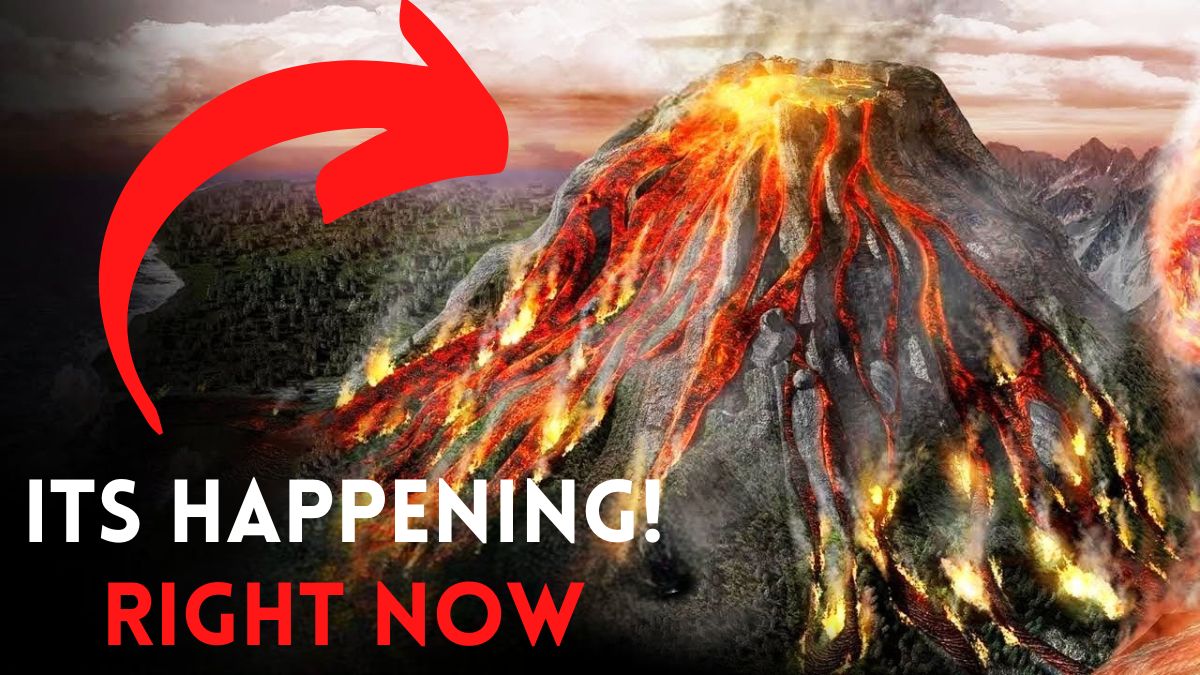

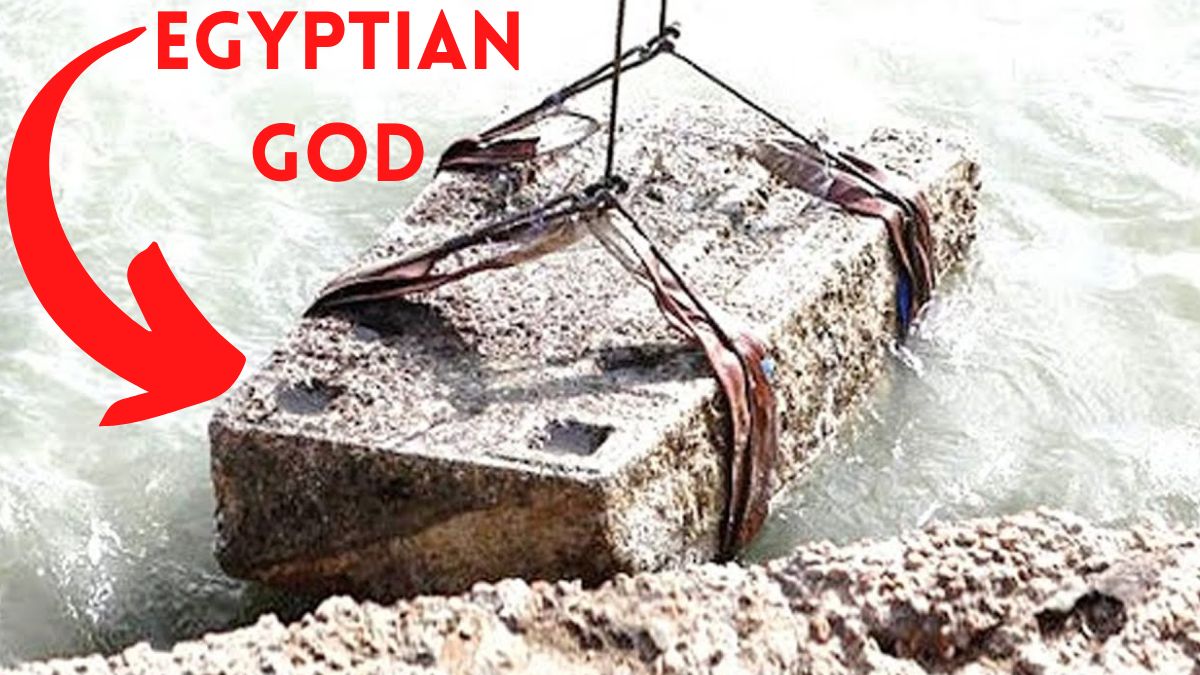
![“[God DNA] Proves Presence of God” says Scientists God DNA](https://spaceupper.com/wp-content/uploads/2021/10/God-DNA.jpg)
